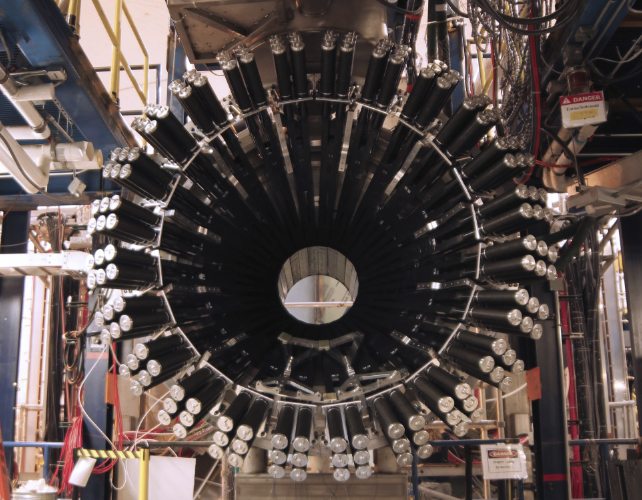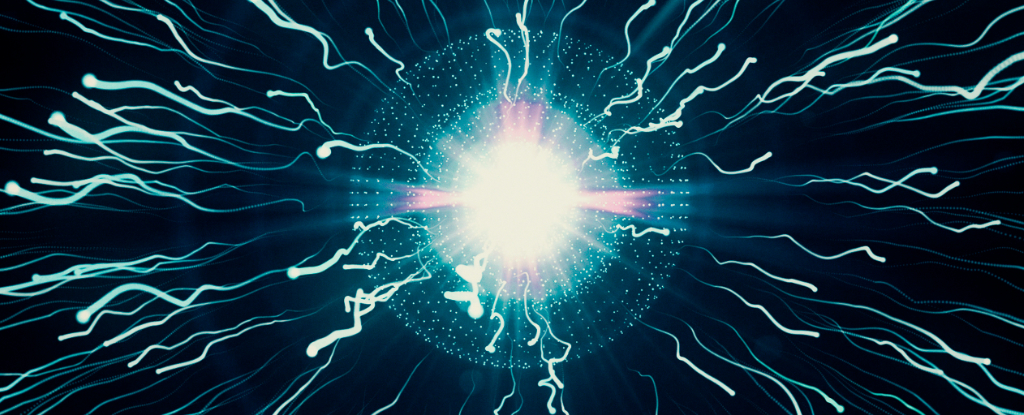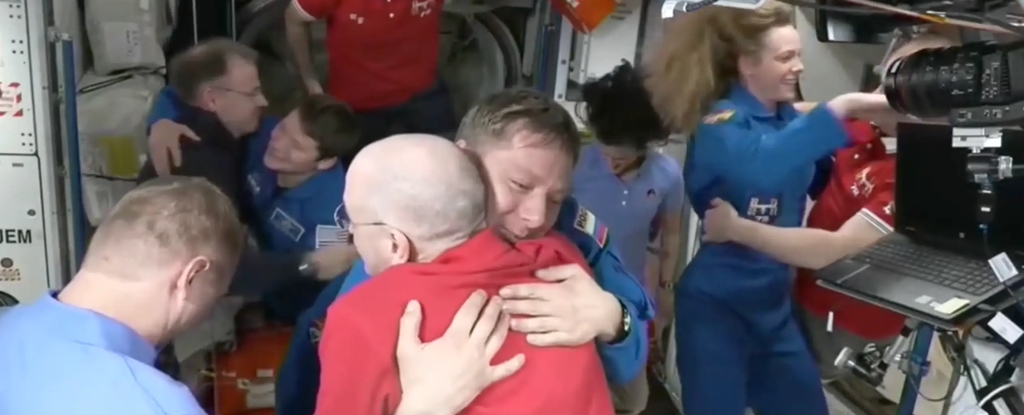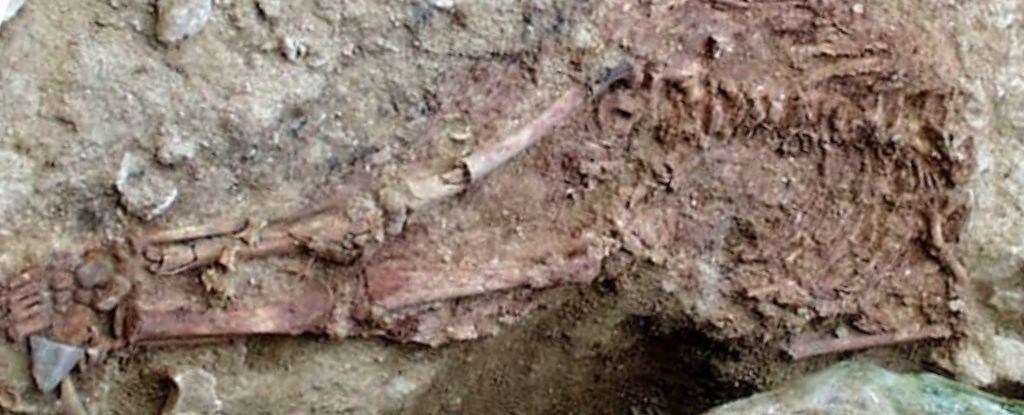An experiment more than 10 years in the making has delivered its first glimpse of the hurricane of particles whirring inside subatomic particles called neutrons, laying the groundwork to solve a mystery deep in the heart of matter.
Data from the Central Neutron Detector at the US Department of Energy’s Thomas Jefferson National Accelerator Facility (TJNAF) is already playing a role in describing the quantum map of the neutron’s engine.
“It’s a quite important result for the study of nucleons,” says Silvia Niccolai, a research director at the French National Centre for Scientific Research.
What we regard as the nucleus of an atom is a beehive of even smaller particles called quarks struggling against a sticky exchange of gluons. Wherever two quarks of a flavor called ‘up’ are bound to a flavor called ‘down’, you’ll find a proton. Make it two down quarks and a single up, you’ll have yourself a neutron.
Describing quark trios in such a fashion makes them sound as organized as eggs in a carton. In truth, their existence is anything but conveniently arranged, with a chaotic storm of particles and antiparticles existing and not existing in quantum competition.
To grasp the distributions and movements of swarms of quarks in their gluon shackles, physicists have traditionally shot nuclear particles with electrons and observed how the tiny bullets ricochet. To make the results of these experiments easier to describe, theorists refer to units of quarks and gluons operating under distinct quantum frameworks as partons.
In recent decades, high-energy particle accelerator experiments using the CEBAF Large Acceptance Spectrometer and its upgrade at TJNAF have deciphered the proton’s parton puzzle, solving mysteries that include a confusing discrepancy between the nucleon’s mass and size.
Neutrons have been a harder nut to crack, shedding their electron shrapnel at angles beyond the reach of the spectrometer’s detector.
“In the standard configuration, there was no detection for neutrons possible in these angles,” says Niccolai.
In 2011, construction on a new detector began in collaboration with CNRS, which was eventually installed in 2017, before being put through its paces in initial experimental runs in 2019 and 2020.

Far from smooth sailing, the experiment design allowed the occasional proton to sneak in and contaminate the results. Only after some clean-up from a purpose-designed machine-learning filter could the numbers finally be applied to theoretical models on neutron activity.
The first study to make use of the data has put much-needed constraints on one of the least understood distributions of partons in neutrons known as generalized parton distribution (GPD) E.
By comparing results of the experiment with previous data on protons, researchers used the differences in quarks to distinguish a significant mathematical feature of GPD E from a similar model.
“The GPD E is very important because it can give us information into the spin structure of nucleons,” says Niccolai.
Spin in a quantum sense encapsulates a quality akin to angular momentum in our everyday world. Prior measurements of the spins of quarks that make up protons and neutrons find these characteristics contribute no more than around 30 percent of the nucleon’s total spin, leading to the so-called spin crisis.
Just where the remaining fraction comes from, whether from interactions with gluons or some other less-understood behavior, is a question future experiments could finally solve.
Having a means to accurately compare the twin engines blazing away in the hearts of atoms is almost certain to lead to fascinating new insights into quantum mechanics.
This research is published in Physical Review Letters.





